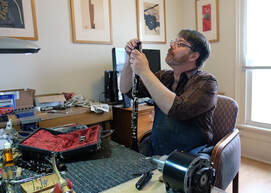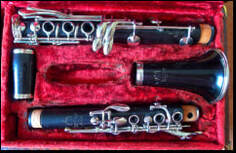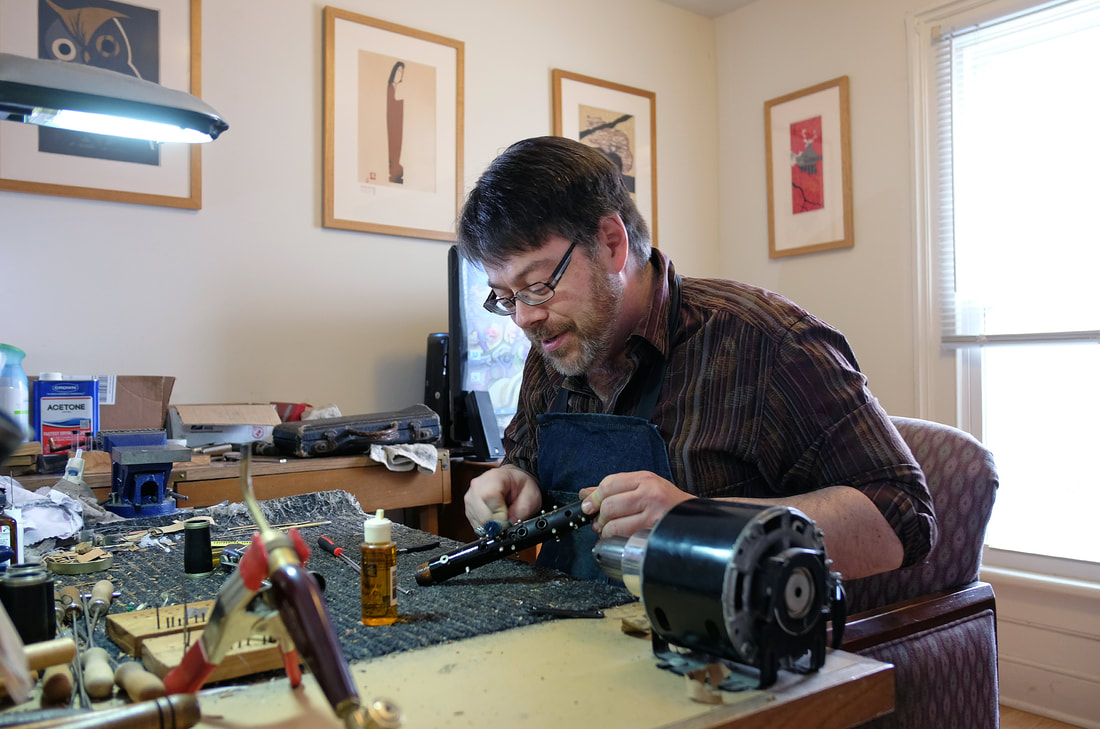 Occasionally, people will ask about the difference, and why an overhaul costs more. Here's my best answer: On a newer plastic student horn, a re pad might only include dis-assembly, washing the body, quickly hand-ragging the keys, replacing missing corks, replacement of all pads, reassembly and adjustment: about a 2 1/2 hour job for about $180. For an instrument with fresh tone-holes, snug posts, tight mechanism, shiny nickel plated keys and recent springing this might be sufficient, especially if its going into the hands of an 11 year old of indifferent ability. An overhaul, on the other hand, would include everything necessary to return the instrument to as close to 'like new' play-ability as is feasible (sometimes extraordinary measures are not justified by the value of the instrument), and address the preferences of the more advanced player in question. This might include: Swedging/countersinking the key-work to remove lost motion, re-facing of tone-holes to assure optimal pad seat, tightening of posts, replacement of all cork (including adjustment of opening height to regulate tone and intonation), thorough oiling of body, buffing of body, posts and keywork, polishing of the bore, straightening or leveling of bent keys, key cups and rods, realignment of keys with tone holes, replacement of weak springs, repair of small cracks or chips, installation of a mix of high quality double bladder/leather and cork pads, reassembly and adjustment, and re-gilding the logos! Total of 6-10+ hours depending on age, complexity of mechanism, and condition. Many techs who routinely repair only band grade instruments have neither the time, the knowledge, nor the specialized tools to complete all these tasks, and little incentive to acquire them: At the $60 an hour that the average shop currently charges (plus supplies), a $600 bill wouldn't be out of the question and few customers are discerning or serious enough to make this kind of commitment to their instrument. Trying to explain why all this is necessary frequently got me looks suggesting that I was peddling Snake Oil: We are, after all, a nation of bargain hunters, and quality work is no bargain! However, once your older instrument has been thoroughly overhauled in this manner, you can be assured that, not only is it playing its best, but that it will require little maintenance other than oiling and adjustment for years to come!
0 Comments
 After years of refurbishing Penzel Mueller clarinets, I'm still amazed at the obscurity in which they linger! From a buying point of view, great: from a selling point of view, not so good. So, here's a little info to pique your interest in this unjustly forgotten brand. The company was started by 2 German immigrants, Penzel and Mueller, in the early 1890's in Long Island City NY. They offered a variety of clarinets and flutes, as well as some saxes and brass which I suspect were made by someone else and stenciled with the PM logo. If someone can shed more light, please do! The company operated through the late 1950's (as best I can determine), before ceasing production. Their clarinets (especially the Artist, Studio Recording, and Super Brilliante models) were top of the line horns, easily comparable to anything coming out of Europe during the period. Woody Herman played an Artist model, in fact. The tone was more 'American' than 'French' in concept - think Conn rather than Buffet - great for Jazz as well as concert music, free-blowing, more direct than sweet. Intonation is very good on most of the horns I've tried, and the key-work is comfortable unless you have very small hands: there's a bit of a spread, which is welcome for us large fingered folk! A customer in Texas was kind enough to forward a model/price list from their 1955 catalog: Super Brilliante $340 Artist, new model $265 Empire $265 Bel Canto $185 American Professional $165 Soloist $149.50 Dyna-Tone $139.50 Standard Model $129.50 The only one I've worked on that I don't see here is the 'Studio Recording' model, which was a pro horn that came with 3 barrels. Perhaps it had been discontinued by 1955? Anyway, I hope this is enough to get you to keep an eye out for one of the better PM's in good playing condition. Regardless of the style you play, I believe you'd enjoy it. |
Archives
February 2024
AuthorThe Licorice Shtick Blog is the creation of the Vintage Clarinet Doctor, a Winston Salem, NC based woodwind instrument repair shop specializing in vintage and antique clarinets, saxophones, and the occasional flute. Categories |

 RSS Feed
RSS Feed